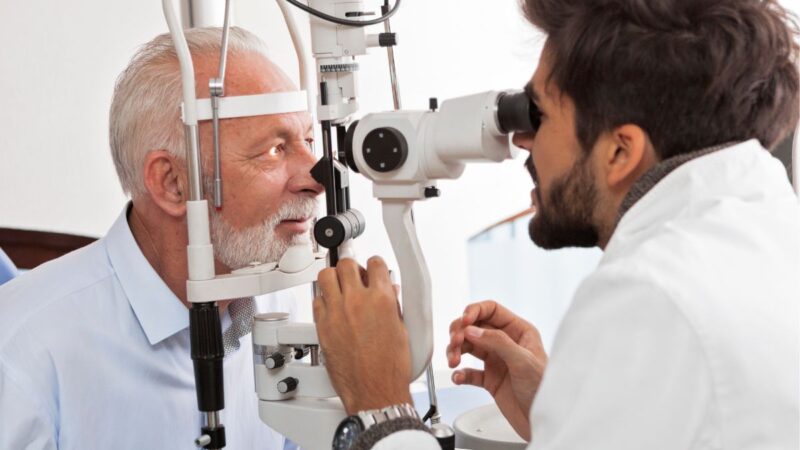The Benefits And Drawbacks of Various Refractive Surgical Procedures for Improved Eyecare

LASIK Surgical Procedure
LASIK surgical treatment is a frequently executed refractive procedure that aims to remedy vision concerns such as astigmatism, farsightedness, and nearsightedness. This surgical method has actually obtained appeal as a result of its effectiveness in offering clients with clearer vision and decreasing their reliance on glasses or contact lenses. Throughout the treatment, a thin flap is created on the cornea, and a laser is utilized to improve the underlying tissue, correcting the refractive mistake. The flap is then rearranged, permitting quick healing and minimal pain for the individual.
One of the key benefits of LASIK surgical procedure is the rapid enhancement in vision experienced by several clients. It is necessary for people thinking about LASIK surgical treatment to undertake an extensive examination by an eye care specialist to determine if they are ideal candidates for the treatment.
PRK Procedure
The PRK procedure, likewise referred to as Photorefractive Keratectomy, is a sort of refractive surgical treatment that intends to correct vision issues similar to LASIK surgical treatment. Unlike LASIK, which entails creating a flap in the cornea, PRK services the surface area layer of the cornea. Throughout the PRK treatment, the external layer of the cornea, called the epithelium, is eliminated to permit improving of the underlying corneal cells with an excimer laser. This improving helps to fix refractive errors such as farsightedness, astigmatism, and nearsightedness.
One of the benefits of PRK over LASIK is that it gets rid of the risk of flap-related difficulties considering that no flap is created throughout the surgery. Regardless of the longer healing duration, PRK can be a suitable option for people seeking vision modification surgery.
SMILE Surgical Treatment
A sophisticated refractive surgical procedure method gaining appeal in the area of ophthalmology is SMILE Surgical procedure. Little Incision Lenticule Extraction (SMILE) is a minimally intrusive treatment that corrects vision by reshaping the cornea making use of a femtosecond laser. Unlike conventional LASIK surgical treatment, SMILE Surgery entails creating a little laceration in the cornea to draw out a lenticule, which results in less disturbance to the corneal structure and potentially faster recuperation times.
One of the main benefits of SMILE Surgical procedure is its ability to treat myopia (nearsightedness) and astigmatism with high precision, bring about outstanding aesthetic end results for patients. The minimally intrusive nature of the procedure also minimizes the threat of issues such as completely dry eye syndrome, making it a beneficial choice for people looking for refractive surgery.

LASEK Method
Having discovered the advantages and factors to consider of SMILE Surgery, another noteworthy refractive surgery method worth taking a look at is the LASEK Strategy. LASEK, which means Laser-Assisted Subepithelial Keratectomy, is a type of laser eye surgical treatment that intends to remedy refractive mistakes such as myopia (nearsightedness), hyperopia (farsightedness), and astigmatism.
Unlike LASIK, LASEK does not include producing a corneal flap. Rather, throughout a LASEK procedure, the cosmetic surgeon utilizes a diluted alcohol option to loosen the thin outer layer of the cornea, recognized as the epithelium. This layer is after that carefully relocated aside to allow the laser to improve the underlying corneal cells. When the cornea has been reshaped to the desired level, the epithelial layer is rearranged.
One of the key advantages of LASEK is that it can be appropriate for people with slim corneas that might not be good candidates cardiologist andalusia for LASIK. In addition, LASEK usually results in marginal post-operative discomfort and a quicker healing time contrasted to PRK. The visual recovery procedure with LASEK may be somewhat longer than with LASIK.
Implantable Contact Lenses
Implantable Call Lenses offer a long-term vision correction service for people seeking an option to typical call lenses or glasses. These lenses, also understood as phakic intraocular lenses, are operatively inserted into the eye to correct refractive errors such as nearsightedness (nearsightedness), hyperopia (farsightedness), and astigmatism. andalusia pediatrics. Unlike typical contact lenses that sit on the surface area of the eye, implantable call lenses function within the eye itself, offering clear vision without the requirement for everyday maintenance or removal
One of the crucial benefits of implantable contact lenses is their durability. When inserted, they can remain in the eye forever, offering steady and consistent vision correction. Furthermore, these lenses can be an exceptional alternative for people that are not great prospects for laser eye surgical procedure or that prefer a relatively easy to fix vision improvement treatment.
Nonetheless, implantable call lenses do lug some threats, consisting of the possibility for cataracts or increased eye stress. It is crucial for individuals considering this alternative to talk to an eye treatment specialist to establish if implantable call lenses are the appropriate choice for their certain requirements and eye health and wellness.
Final Thought
In conclusion, each kind of refractive surgical procedure has its own benefits and drawbacks. LASIK surgery is prominent for its fast healing time, while PRK procedure might be suitable for individuals with slim corneas.

Overall, SMILE Surgical treatment offers an appealing alternative for individuals looking to boost their vision through refractive surgical procedure.
Comments on “Andalusia Pediatrics: Compassionate Look After Your Children”